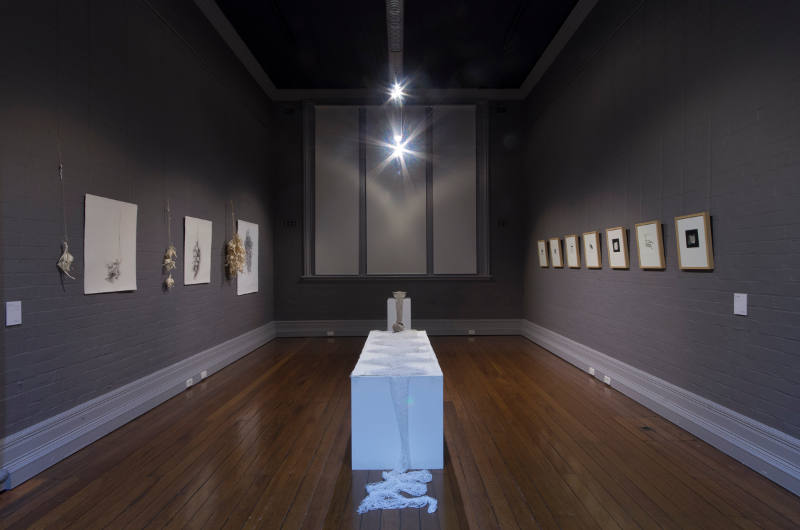Living Data
Animating Change: Exhibition
| Exhibition |
Forum |
Dance |
Interviews |
Impacts |
Stories, hypotheses, data and iconography are combined to make sense of climate change.
An Ultimo Science Festivalevent at The Muse, Ultimo TAFE, Sydney, 16 - 26 August 2012
Project leader: Lisa Roberts Exhibition curators: Christine McMillanand Lisa Roberts

Left: Margaret Brooks Centre and right: Christine McMillan
Combining stories, hypotheses, data and iconography
An Ultimo Science Festivalevent at The Muse, Ultimo TAFE, Sydney, 16 - 26 August 2012
Curators: Christine McMillanand Lisa Roberts
Presentations INDEX / COMMENTS
The Subak
The Subak works are the outcome of an Artist in Residence in Bali. Research by Christine McMillan and Margaret Brooks was informed by reading anthropologist J. Stephen Lansing and sharing life experiences and knowledge with local rice growers and artists.
The tipat is my symbol for the complexity of life in Bali, the everyday overlayed with the ceremonial, the ceremonial inseparable and intertwined with the cycle of rice growing. The story told by the use of sustainable and unsustainable materials embodies the sustainable Bali which is struggling under the pressure of unsustainable influences.
Christine McMillan
I have chosen the tipat as a symbol of the Subak. Tipat are everyday food; packages of cooked rice from the Subak paddies. They are also religious offerings in the Subak temples. My work with tipat explores the fragility of ancient and sustainable rice growing practices of Bali. It questions how much rice is enough and how we might protect the Subak for future generations.
Margaret Brooks
The subak reflects the philosophical concept of Tri Hita Karana, which brings together the realms of the spirit, the human world and nature. The subak system of democratic and egalitarian farming practices has enabled the Balinese to become the most prolific rice growers in the archipelago despite the challenge of supporting a dense population.
Unesco World Heritage Centre. Available at http://whc.unesco.org/en/list/1194/.
Accessed: 24 September 2012











